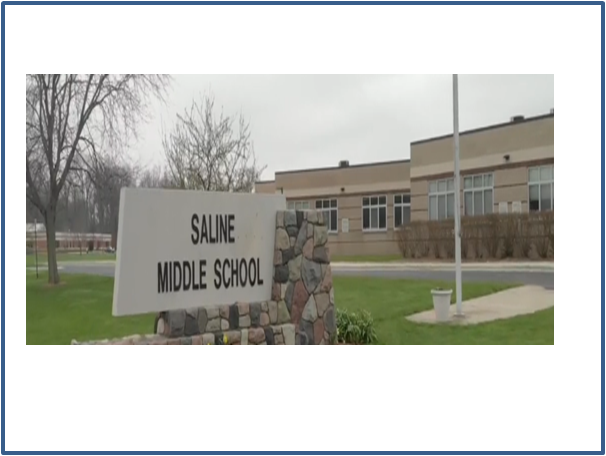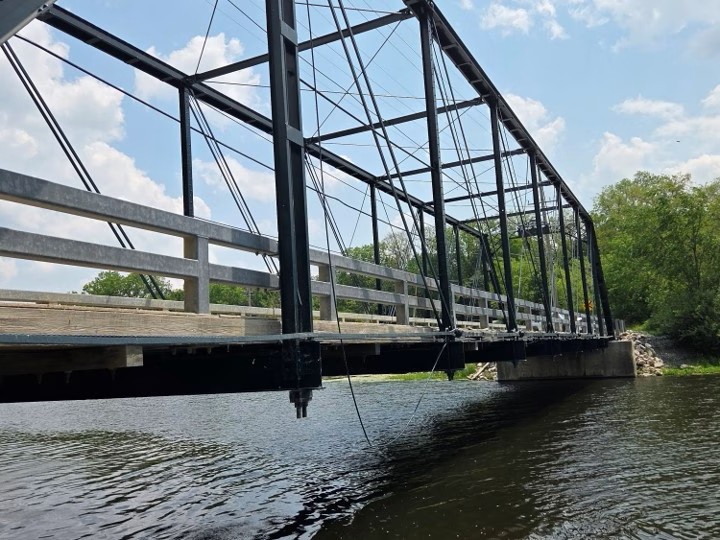After some needed remediation work, after mold was discovered in the building, Saline Middle School is getting back in session.
Saline Superintendent Rachel Kowalski gave a district update about Saline Middle School (SMS) on Aug. 26:
“We are pleased to report that after receiving an analysis of test results and a verbal review with our partners at Nova Environmental, we have reopened Saline Middle School to staff. Teachers and staff were alerted this afternoon that they are able to return to the building to make the final preparations for their students.”
“After completing remediation efforts, Nova Environmental retested areas of the building today (Tuesday, August 27). Nova was very pleased with the results, emphasizing that the District went above and beyond any required regulations. While not required based on regulations, we are continuing to run dehumidifiers to reduce humidity in the orchestra room.”
Kowalski gave another update on Aug. 27th.
In her update, Kowalski said in part, “I’m writing to provide a summary of the maintenance, repairs, and remediation efforts that have taken place at SMS this week, along with our plans moving forward. Importantly, SMS WILL be in session tomorrow, Thursday, August 28. The Middle School is currently open to teachers and staff. The Saline Area Senior Center is also open, and extracurricular activities are able to continue in the building.”
What Happened
Just days before the start of school, Saline schools announced the middle school’s delay due to several classrooms being impacted by high humidity levels, which led the district out of an abundance of caution to work immediately with professionals on mold testing and remediation with a limited number of spaces testing positive for a type of mold that needed to be remediated.
On Aug. 11, the district said became aware of a problem with the building HVAC system involving vents that had broken and remained open, which caused ductwork to condensate and fill with water, which in turn increased the humidity in the building, exacerbating an already humid summer. Kowalski said they consulted with professionals immediately to help resolve the issue, who were on site by Aug. 12, but due to delays in obtaining parts and skilled labor, the system was fully repaired on Aug. 21.
Kowalski said when teachers were fully back in the building last week, they reported concerns as they unpacked and prepared their classrooms. On Wednesday, Aug. 20, Saline’s facilities team began reaching out to professional partners to help address the problem. Kowalski said Balfour was on-site as soon as that Wednesday evening, utilizing industrial air scrubbers and dehumidifiers to bring down the humidity in the building.
SAS said on Aug. 21, Nova Environmental assessed the building and conducted preliminary testing that was then shared with district officials on Friday afternoon. In the meeting, Nova categorized the results as “largely reassuring.”
“One classroom (the orchestra room) showed indoor mold levels above outdoor levels, and surface testing confirmed some areas of growth,” Kowalski said. “In those initial samples, taken before any professional cleaning, Nova identified Stachybotrys/memnoniella (commonly known as black mold) in one air sample from the orchestra room and in two surface samples in other locations. These findings were very isolated and required only limited cleaning.”
While Saline schools were only required to complete limited cleaning and restoration in one room, Kowalski said district officials took action on Friday afternoon (Aug. 22) to notify employees and proactively closed the entire building in order to allow remediation efforts to begin, above and beyond the guidance of professionals.
By that Friday evening, Kowalski said Nova Environmental conducted a complete walk-through of the building and provided guidance on remediation actions and recommended contractors.
“Contractors replaced ceiling tiles, roof air handler filters, and individual classroom unit filters to ensure clean air throughout the building,” Kowalski said. “By Sunday, a full crew from Serv-Pro was on-site to lead a thorough, building-wide cleaning process that included air scrubbers, HEPA vacuuming, dehumidification, and antimicrobial surface cleaning. Unfortunately, delays in the availability of skilled professionals delayed our timeline. We are aware of other districts contending with similar challenges and timelines simultaneously.”
As work neared completion, Kowalski said again they consulted with their partners at Nova Environmental to identify a plan for additional testing in the building.
“Since mold on the surfaces had been remediated, Nova Environmental recommended focusing on air sampling and provided the district with a recommended plan for re-testing,” Kowalski said. “Nova Environmental retested the air in 13 areas of the building and the outdoor air on Tuesday, August 26. That afternoon, a representative from Nova Environmental met with District officials to review air testing results and reported they were very pleased.”
Out of an abundance of caution and concern for their staff and students sensitive to mold allergens, Kowalski said the district is continuing to run dehumidifiers to address the presence of asperilligus pencilium mold in the orchestra room, which, while markedly improved, remains above the level reported on the outdoor air sample.
The orchestra room was expected to stay closed until additional testing results were conducted, scheduled for Friday, August 29.
Saline schools noted there was no presence of any Stachybotrys/memnoniella identified in the building at the time of sampling.
Moving Forward
Kowalski said Saline’s Operations and Facilities teams “are committed to providing training to our staff in order to more proactively identify problem areas in the future.”
“In light of the numerous challenges experienced in the area recently, Nova Environmental has additionally recommended that our schools conduct annual summer testing for mold moving forward, and we are committed to adhering to their guidance,” Kowalski said.
As for the missed days of instruction at the middle school, Kowalski said Michigan schools are allotted six days that can be forgiven for any reason (snow, power outage, health, etc).
“If the delayed start to the school year causes SMS to exceed the six forgiven days, we will begin working with the state Department of Education to determine a plan for making up (or forgiving) the missed instructional time,” Kowalski said.
She ended her update by saying, “While this was not the start to the school year we had hoped for at SMS, I am extremely grateful to our families, students, staff, and teachers for your patience and flexibility. I also extend my gratitude to our professional partners, contracted skilled laborers, and internal facilities and operations teams who have logged many long hours to re-open the building as quickly as possible. The health and safety of our students, staff, and all visitors to our buildings is at the heart of every decision we make and something we do not take lightly.”
“I am VERY excited to see our students back at SMS Thursday morning to kick-off the 2025-26 school year!”
The environmental report can be found at https://www.salineschools.org/departments/operations-center/buildings-and-grounds/.






 8123 Main St Suite 200 Dexter, MI 48130
8123 Main St Suite 200 Dexter, MI 48130

